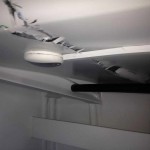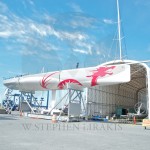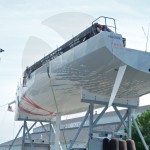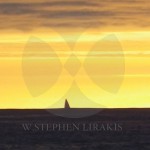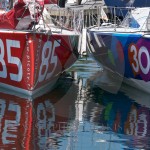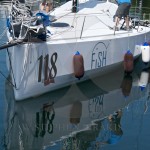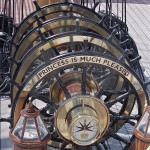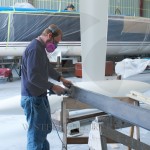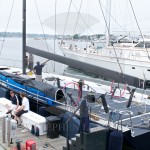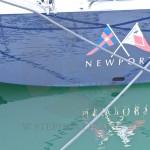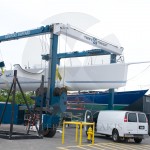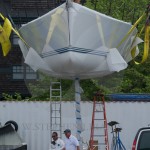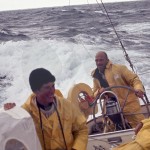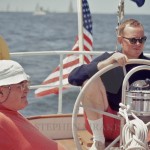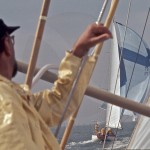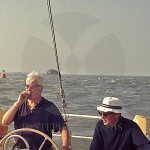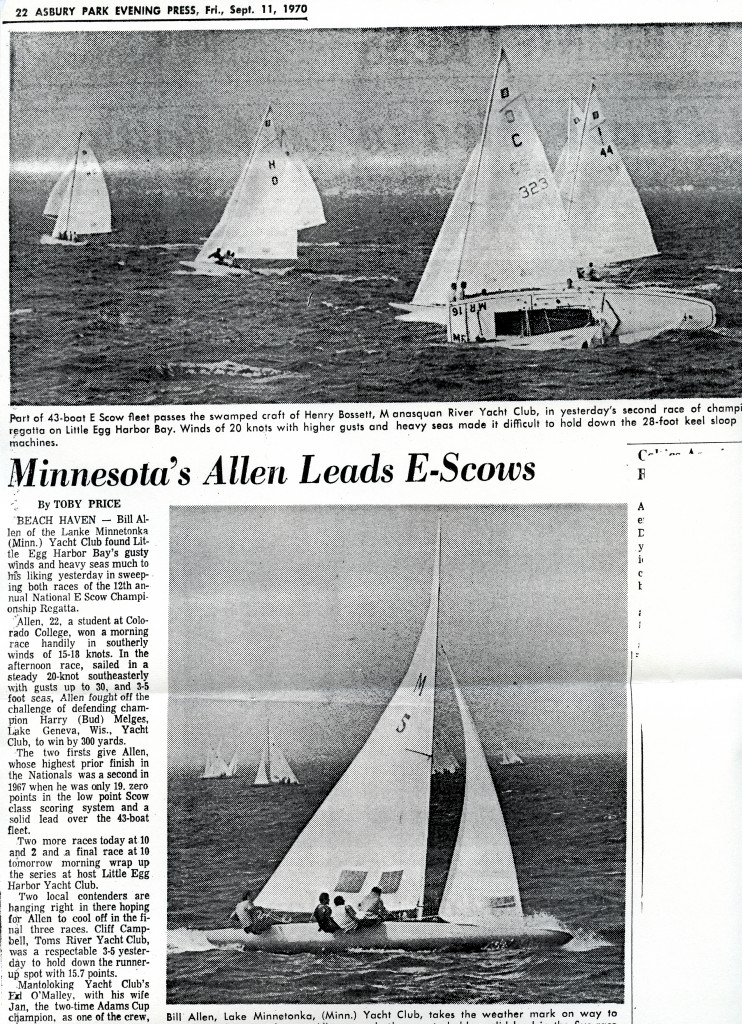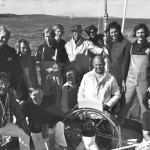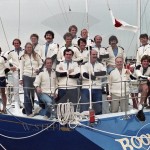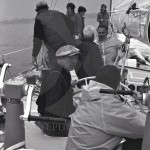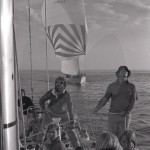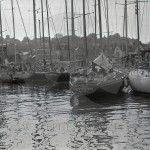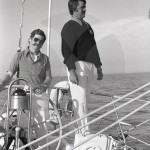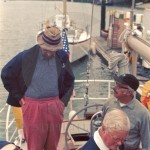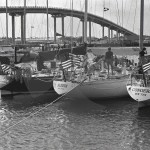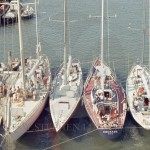Here are images of the damage to “Beau Geste.” Taken from sailing Anarchy. Wow. We may eventually know what happened. I am wondering IF it is a transition area between high density and low density foam in the core?
Category: offshore sailing
UNDER THE HOOD
Beau Geste, Karl Kowk’s 80 foot Farr design has had a very ambitious campaign. Sailed hard and well. Yesterday she suffered a catastrophic failure of her hull while participating in the Auckland to Noumea race.
These kinds of events have attracted our attention since the beginning of sailing. Safety at sea has always been a priority; as it should be.
For me, I have always been intrigued by the solutions naval architects have arrived at for the structural integrity of yachts. No where do the words “Form Follows Function” have a more profound meaning. I am often surprised by the lack of what I consider common sense in structural design.
Only a few weeks ago “Belle Mente” had a similar problem; however it was during a shakedown sail, not while racing. One of the more public events have been “One Australia” during the America’s Cup in San Diego, which folded in half and sank. “Young America” folded but did not sink.
All safe after yacht abandons Noumea race
Published: 5:26AM Tuesday June 05, 2012 Source: ONE News
 The Beau Geste. – Source: sailnoumea.com
The Beau Geste. – Source: sailnoumea.com
A yacht is now safely anchored off Norfolk Island’s capital Kingston, after suffering hull and decking damage while taking part in the Auckland to Noumea yacht race.
Rescue Coordination Centre New Zealand (RCCNZ) mission co-ordinator Neville Blakemore said all 18 members of the crew were safe and in good spirits.
The 24-metre Beau Geste sought assistance from RCCNZ after it hit trouble around 7pm yesterday race around 185 kilometres (100 nautical miles) east of the island.
RCCNZ arranged for the yacht to be accompanied by the fishing vessel Advance 2 as it made its way to Norfolk Island.
“It would have been a long night for the crew, in difficult conditions, but the boat has made safe anchorage under its own power,” Blakemore said. “A support vessel was on hand throughout the night in case the crew had had to abandon ship.”
The yacht was equipped with two 10-man life rafts.
The crew is made up of New Zealanders, Australians, Chinese, with one American on board and all are described as experienced racers.
A cargo ship, Winchester Strait, responded to the rescue call to nearby vessels and was making its way to the stricken yacht. A Royal New Zealand Air Force P3 Orion was also on standby to assist if needed.
The official race website sailnoumea.com said that the Beau Geste withdrew from the Auckland to Noumea leg of Evolution Sails Sail Noumea at 8.20pm after suffering structural damage.
SHAPES AND REFLECTIONS
OPEN 40 AND WHERE THE WILD THINGS ARE
Again I am re-posting from sailing anarchy. I had barely mentioned the Atlantic Cup and the Open 40 class; which have just finished sailing in Newport. This is an attempt to bring a European event to America. It is very cute to say the least. These boats are set up for offshore sailing so the inshore racing is more about the spectacle.
CLOSE ENCOUNTER
I have hit two whales in my sailing career (and two basking sharks). I had a close encounter with a third whale much like the one shown here. It all happened so quickly there was never time to record the event.
OUT ON BAIL AND OUT OF SURGERY
The Bermuda Race is only a few weeks away. The new Belle Mente had some teething problems, hopefully now cured. She has an ambitious program which does not have much time for rehab should an injury occur.
Rima had been arrested for DWI and is out on bail with a new keel 2 feet deeper and several thousand pounds lighter.
If I were writing a fictional novel about sailboat racing I could not have thought these things up.
The Open 40 class concluded the Atlantic Cup yesterday. Two of these boats had competed against us last year in the transatlantic race. They gave us fits for most of the race.
NATIONAL SAILING HALL OF FAME
Ok, the National Sailing Hall of Fame in Annapolis Maryland, will evidently induct 10 deserving sailors this year. It is still a new organization, but I am surprised that the Nye family of “Carina” have not made it into the final rounds. In the end election to any organization is a popularity contest I suppose. Read the rules for election: HERE
.
I should add that there is a book now available on the “Carina” story: “Home is the Sailor”
HAPPY SAILING
SCOWS WERE ALWAYS MY FAVORITE BOATS
I think there must be some irony here. The trend has been for narrower and narrower bow sections as designers looked to reduce wetted surface. Crews ware stacked further and further aft both upwind and down. With the success of the mini transat boat that is an ugly duckling, will the trend land in our playground? The following was written by Elaine Bunting.
The inland lake scows have long been a favorite. I owned an “E” scow which I sailed on Narragansett Bay in the early sixties and subsequently sailed quite a lot in Barnegat Bay with Henry Bossett. That’s us capsized.
Ugly – but fast?
The latest hot trend in ocean racing design is the scow bow. But it’s ugly and it looks as if it’d be brutal upwind
I’m torn when I think about the latest trend for ocean racing, the scow bow. On the one hand, it’s a fascinating development. On the other…cripes, these new designs are ugly.
Round bowed scows have been well proven; the skimming dish designs have long been popular in the US, though less so in Europe. Yet the design principle made no major inroads into offshore design until last year, when French engineer and solo sailor David Raison won the Mini Transat in his self-designed mini 6.5m Mini Magnum/Teamwork Evolution.
This round bowed, push-me-pull-you 21-footer beat the 2nd placed prototype Mini to the finish in Brazil by 130 miles – a huge margin in such an evenly matched fleet – and recorded an average across the entire Atlantic of 6.8 knots.
He nicknamed his wide-bodied design ‘le gros porteur’, the jumbo jet, in reference to its max beam, carried as far forward as possible.
Now there is a proposal from design group Reichel/Pugh for a 90ft scow (pictured above) designed to attempt to beat the Transpac record. We’ve got a full report on this intriguing design in our May issue.
The basic principle of the scow design is to maximise hull righting moment. The beam is carried well forward which means that, when heeled, the hull lines are further outboard than with a conventional bow. This makes the scow design very powerful when reaching, obviously important on races such as the Mini Transat or the Transpac, which have a predominance of reaching conditions.
It has the added advanced advantage of large reserve buoyancy in the bow to prevent the bow from burying or nosediving when driven hard off the wind.
Put that together with a canting keel, as is the case on David Raison’s boat, and you have a potentially very powerful yacht indeed.
However there are two snags with this design.
The first is that, upwind, the rounded bow slams, even when well heeled. This means it may not be that versatile a design or particularly comfortable in all-round conditions.
And in view of what are seeing in the Volvo Ocean race, which has suffered multiple structural problems in the harsh seas of the Southern Ocean, it would be a very brave designer (and sponsor) indeed that plumped for a scow design round the world or more general racing conditions.
Secondly, let’s face it: these two new extreme scow designs are not pretty. Would you want a yacht that looked like this? I wouldn’t. If your boat was jarring as this, you’d have to win.
But since Raison’s dramatic victory, I suspect designers everywhere have been playing around with the scow idea. In classes whose rules don’t place a restriction on maximum righting moment, it’s an obvious idea to explore. If it takes off, clever minds may even find some creative ways of softening the brutal front end.
HOW MANY DO YOU REMEMBER?
When someone from the sailing fraternity passes it naturally gives you pause. Bobby Connell in in some of the photos above (with a cigarette) How many others do you recognize?

